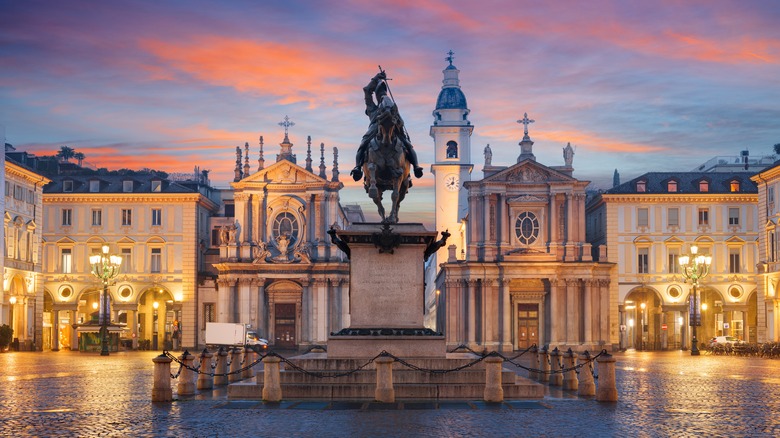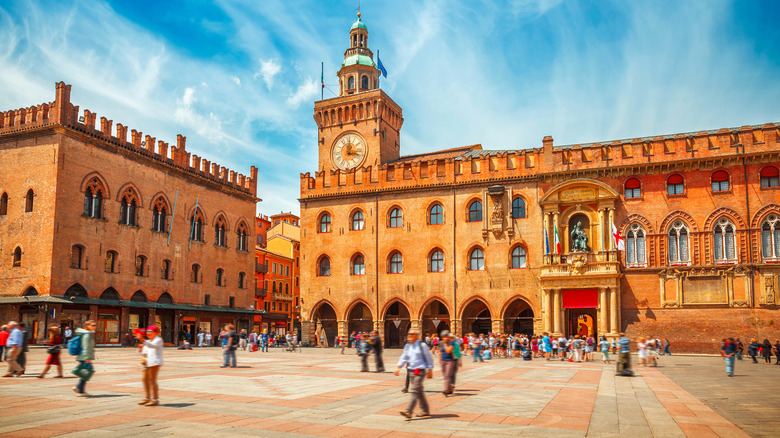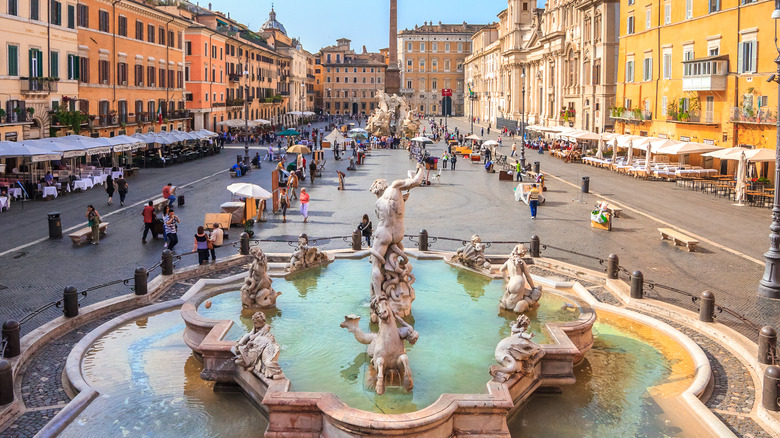Rick Steves Reveals The Reason This European Country Is His Absolute Favorite
As a leading U.S. authority on overseas travel, Rick Steves knows a thing or two about Europe. He's opened our eyes to Europe's best and worst through his wildly popular guidebooks, television shows, and travel articles. These include everything from the top small towns for honeymooners and the most scenic boat rides to the touristy parts of England we should avoid. Steves is often quite candid when expressing his views. While some people may disagree with him, it's always interesting to hear what he has to say and how he has to say it.
That's why our ears perked up when he identified Italy as his favorite European country in a recent interview with Ben Abramson from Strong Towns. Steves' top pick comes as no surprise, as the jaw-droppingly beautiful country of Italy boasts exquisite cuisine, architecture, art, and more World UNESCO Heritage sites than any other nation. However, these are not why the country is number one on Steves' list.
The Italian piazza
The reason behind his choice, which may surprise you, is his deep appreciation for the Italian piazza — the central square or marketplace that's the heart of life in all towns. "The piazza is where people come together, person to person without televisions, without locked doors, without garages, without siloing," says Steves in the Strong Towns interview. This car-free zone is where humans congregate daily to shop and socialize. It serves as the heart of Italian communities, electrifying them from the center all the way out to their periphery.
As visitors, we may be mesmerized by the vivacity of Italian cities and, at the same time, not understand it. Steves notes, "You know, it's funny, when Americans are in Europe, they marvel at the energy and the people friendliness of the urban cores. But oftentimes, they don't put it together." Thinking about Italian cities this way emphasizes that the city's vibe or soul is not derived from impressive medieval landmarks or groups of pretty buildings. They get them from the humans that live there, and in particular, how they come together if they come together at all.
Maybe this is one reason why Italian cities exude magic that's missing in municipalities that lack these vital cores. So Steves goes to Italy to get his piazza fix, and we can do the same.
Not-to-miss Italian piazzas
All Italian towns and cities have piazzas, and they come in a multitude of shapes, sizes, and personalities. Here are a few you shouldn't miss the next time you're in the Bel Paese. Brightly hued and ovular-shaped Piazza Navona in Rome was once a Roman chariot track and is now the city's most vibrant piazza. All kinds of colorful characters hang out here, making it a great place to people watch. The ancient piazza is also a perfect spot to sit and enjoy a caffè while contemplating the passage of time.
At Piazza della Signoria in Florence, Piazza Navona's warmth is replaced by a sense of austerity, with the formidable Palazzo Vecchio towering ominously over the square. There's nothing silly about this piazza. It served as a political focal point for Italy during the Renaissance period. This was a time of great controversy in Florence when the Dominican Friar Girolamo Savonarola initiated a violent purge known as "Bonfire of the Vanities," attempting to rid the city of the evil influences of art and money. The Florentines finally got tired of him burning their favorite paintings and decided to burn him instead, right in the middle of the piazza.
Other Italian city cores with strong piazza energy are Piazza Maggiore in Bologna, Prato delle Valle in Padua, and Piazza del Plebiscito in Naples. Perhaps the most famous of them all is Piazza San Marco in Venice, which is a real treat for history buffs.


